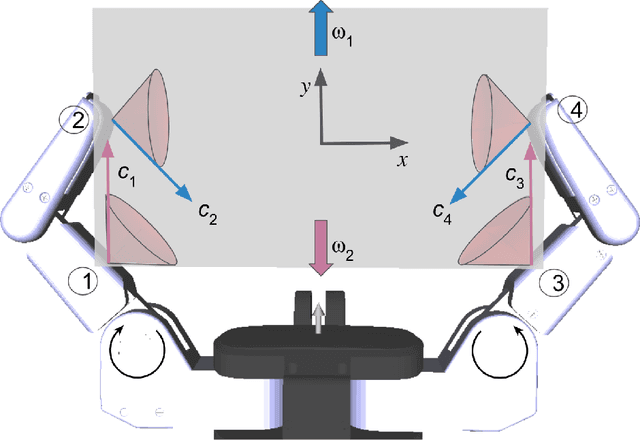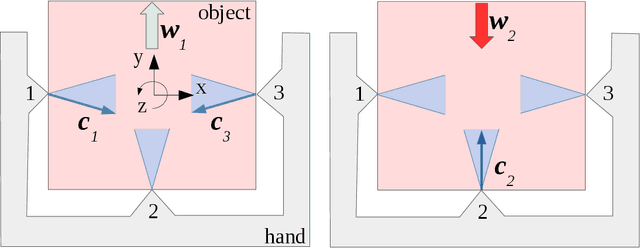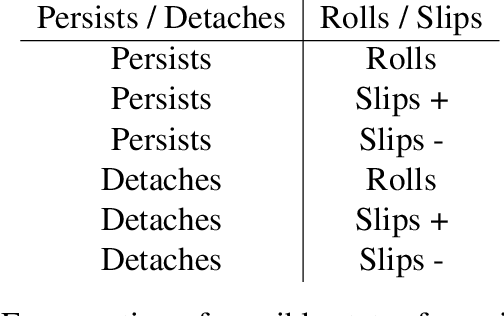Grasp Stability Analysis with Passive Reactions
Paper and Code
Mar 10, 2021



[...] We argue that the traditional grasp modeling theory assumes a complexity that most robotic hands do not possess and is therefore of limited applicability to the robotic hands commonly used today. We discuss these limitations of the existing grasp modeling literature and set out to develop our own tools for the analysis of passive effects in robotic grasping. We show that problems of this kind are difficult to solve due to the non-convexity of the Maximum Dissipation Principle (MDP), which is part of the Coulomb friction law. We show that for planar grasps the MDP can be decomposed into a number of piecewise convex problems, which can be solved for efficiently. [...] Thus, we present the first polynomial runtime algorithm for the determination of passive stability of planar grasps. For the spacial case we [...] describe a convex relaxation of the Coulomb friction law and a successive hierarchical tightening approach that allows us to find solutions to the exact problem including the maximum dissipation principle. [...] The generality of our grasp model allows us to solve a wide variety of problems such as the computation of optimal actuator commands. This makes our framework a valuable tool for practical manipulation applications. Our work is relevant beyond robotic manipulation as it applies to the stability of any assembly of rigid bodies with frictional contacts, unilateral constraints and externally applied wrenches. Finally, we argue that with the advent of data-driven methods as well as the emergence of a new generation of highly sensorized hands there are opportunities for the application of the traditional grasp modeling theory to fields such as robotic in-hand manipulation through model-free reinforcement learning. We present a method that applies traditional grasp models to maintain quasi-static stability throughout a nominally model-free reinforcement learning task. [...]
 Add to Chrome
Add to Chrome Add to Firefox
Add to Firefox Add to Edge
Add to Edge